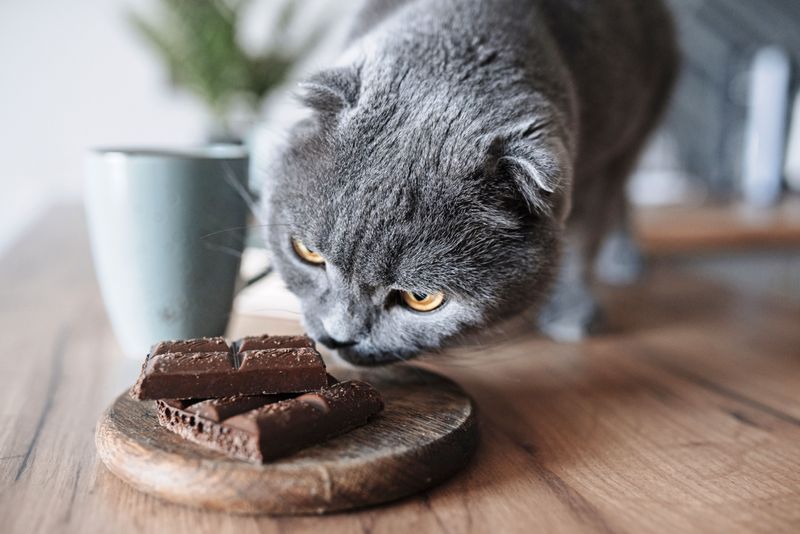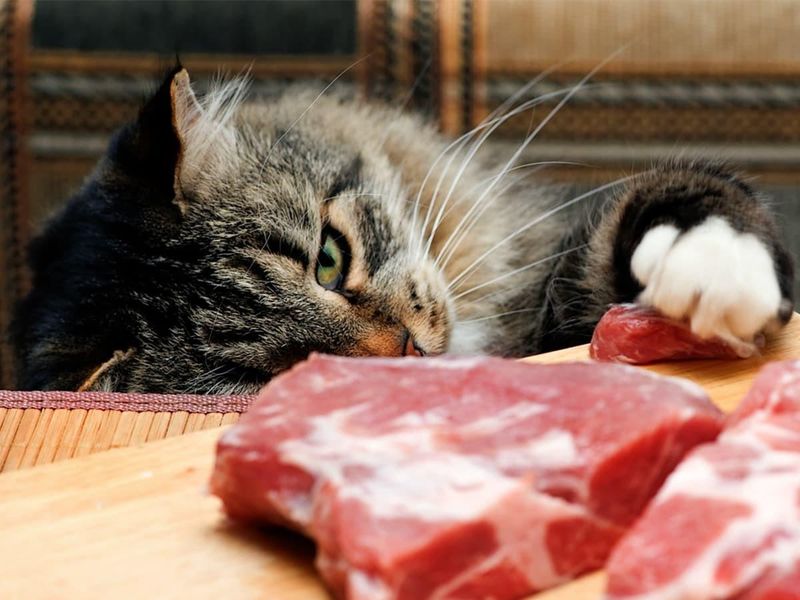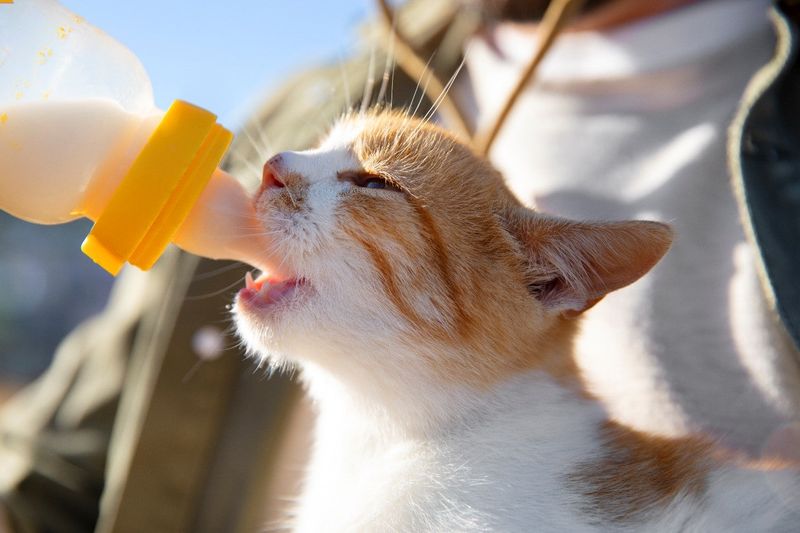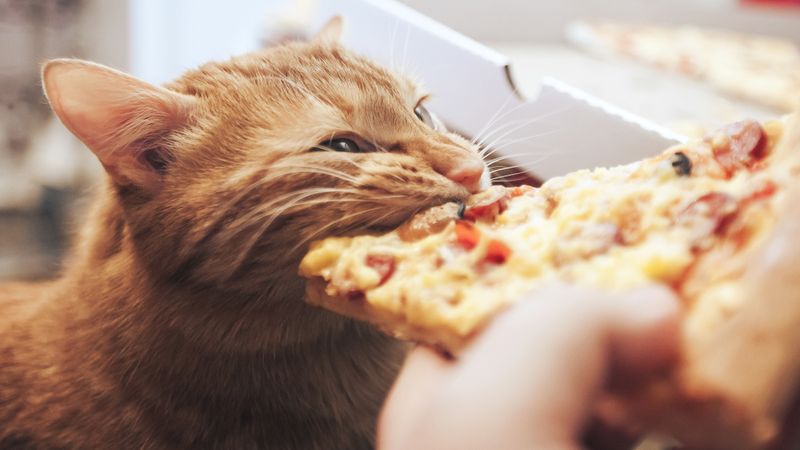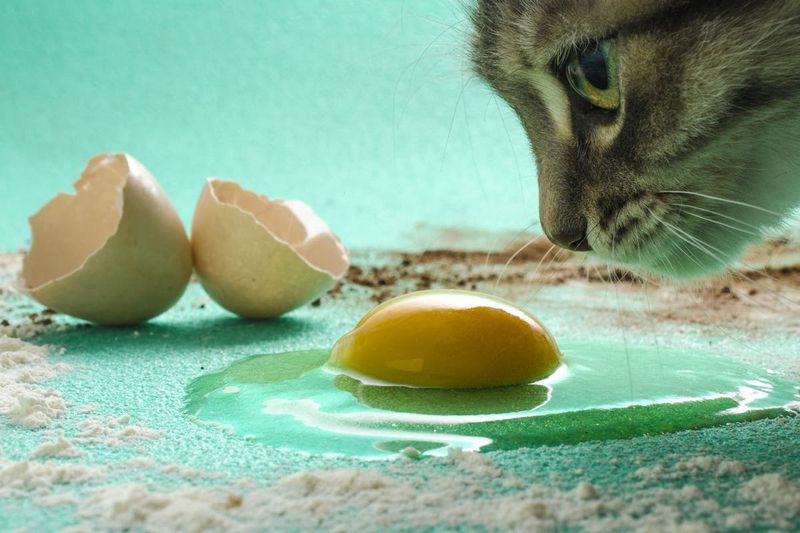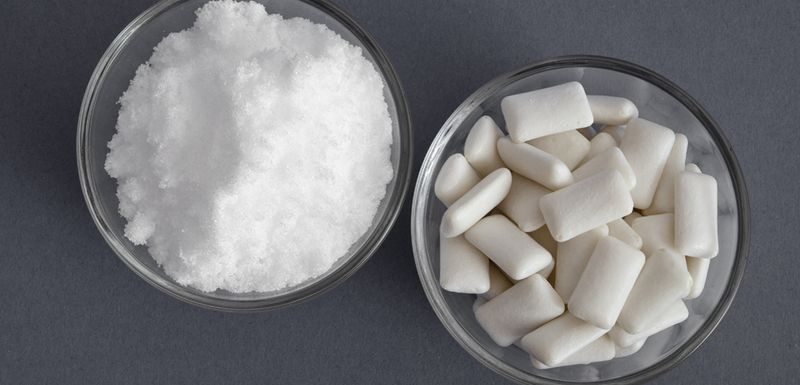📖 Table of Content:
When those big, pleading feline eyes lock onto your dinner plate, it can be incredibly hard to say no. Cats have a way of making us feel like the worst humans on earth if we don’t share a bite or two of our food—especially when they start meowing, purring, or reaching out with their paws. But as tempting as it may be to give in, some human foods can pose serious health threats to your furry companion.
Unlike dogs, cats are obligate carnivores, meaning their dietary needs are very specific and cannot handle many of the ingredients we commonly eat. Just because something smells good or tastes delicious to us doesn’t mean it’s safe for our pets. In fact, many everyday ingredients and leftovers can lead to illness, long-term complications, or even fatal reactions in cats.
To help you protect your feline friend, we’ve compiled a list of 10 common leftovers that should never be shared with them. This guide not only names each harmful food but explains why it’s dangerous, what symptoms to look out for, and safer alternatives to consider. Read on to ensure your next meal doesn’t accidentally become a hazard to your cat’s health.
1. Onions and Garlic
Onions and garlic might add flavor to your favorite meals, but they’re incredibly toxic to cats. Even small amounts—whether raw, cooked, powdered, or dehydrated—can destroy a cat’s red blood cells. Over time, this leads to a condition called hemolytic anemia, which can be life-threatening if not treated. Symptoms may include weakness, lethargy, vomiting, and pale gums. Because cats are relatively small animals, just a tiny dose can have serious consequences. Foods like soups, stews, sauces, and even some baby foods often contain hidden onion or garlic powders. Always read ingredient labels carefully before letting your pet sample anything from your plate.
2. Chocolate
Chocolate may be a sweet treat for humans, but it’s a dangerous toxin for felines. Theobromine and caffeine, both found in chocolate, affect a cat’s central nervous system and heart. Dark and baking chocolate contain the highest levels of theobromine, making them the most hazardous. Ingestion can cause symptoms such as rapid breathing, tremors, elevated heart rate, and seizures. White chocolate is less toxic but still not safe, especially in larger amounts. Cats are less likely to seek out chocolate than dogs, but they can still be curious about chocolate-covered snacks or desserts. It’s best to keep all chocolate products well out of reach.
3. Cooked Bones
While it might seem natural to give a cat a leftover bone, cooked bones are incredibly risky. They can easily splinter into sharp fragments that may cause choking, blockages, or internal tears. Cats may try to swallow large pieces, leading to dental damage or gastrointestinal harm. Unlike raw bones, which some pet owners use cautiously, cooked bones are brittle and unstable. Ingested fragments can perforate the stomach or intestines, requiring emergency surgery. Even bones from fish or poultry, often perceived as safer, can be just as hazardous. Instead, opt for vet-approved dental treats or toys for safe chewing satisfaction.
4. Alcohol
Just a lick or two of alcohol can be extremely harmful to a cat’s liver and nervous system. Unlike humans, cats cannot process ethanol efficiently, making even small doses potentially fatal. Alcohol is often hidden in food items like sauces, desserts, or marinades, increasing the risk of unintentional exposure. A cat that has consumed alcohol might appear disoriented, lethargic, or excessively sleepy. In severe cases, symptoms may escalate to vomiting, tremors, and respiratory failure. Some people mistakenly believe alcohol has the same relaxing effect on cats—it doesn’t. If you suspect your cat has ingested alcohol, contact a vet immediately.
5. Grapes and Raisins
Although the exact toxin is still unknown, grapes and raisins are known to cause kidney failure in cats. Even a single grape or a few raisins can trigger vomiting, diarrhea, and lethargy. Within hours, a cat may become dehydrated, lose its appetite, or display signs of abdominal pain. Because the toxic dose can vary widely between cats, there’s no safe amount to experiment with. Foods like holiday stuffing, trail mixes, and baked goods often contain hidden raisins. It’s essential to stay vigilant during family meals and gatherings where these treats are common. Keep all grape-related items far away from curious paws.
6. Dairy Products
Many people associate cats with saucers of milk, but dairy can be a digestive nightmare for adult felines. Most cats are lactose intolerant, meaning they lack the enzyme lactase needed to properly digest milk sugars. Consuming dairy often leads to stomach upset, gas, bloating, or diarrhea. Cheese, cream, and butter might seem harmless in small amounts, but repeated exposure can lead to chronic issues. Kittens may tolerate milk better, but even they outgrow this ability quickly. If you want to treat your cat with something creamy, look for lactose-free alternatives made specifically for pets. Don’t be misled by cartoons—real cats don’t need dairy.
7. Fat Trimmings
Offering your cat the fatty scraps left on your steak might feel generous, but it’s potentially dangerous. High-fat foods, especially animal fat trimmings, can trigger pancreatitis—a painful inflammation of the pancreas. Symptoms may include vomiting, abdominal pain, and a sudden loss of appetite. Some cats develop chronic digestive problems after consuming excess fat. Cooking oils and drippings, often collected by pets from pans or dishes, pose similar risks. Fat also adds unnecessary calories, contributing to obesity and related health concerns. A better choice is lean, cooked, unseasoned meat in small amounts as an occasional treat.
8. Raw Eggs
Raw eggs present multiple health hazards for cats, including the risk of Salmonella and E. coli infections. These bacteria can cause serious gastrointestinal distress, leading to vomiting, fever, and diarrhea. In addition, raw egg whites contain a protein called avidin, which interferes with the absorption of biotin (vitamin B7). Over time, this can lead to skin problems and a dull coat. While eggs themselves are rich in protein, they should always be thoroughly cooked before sharing with your pet. Raw diets must be carefully balanced and monitored under veterinary supervision. Never feed your cat raw eggs as a treat or protein boost without professional guidance.
9. Caffeinated Drinks or Foods
Energy drinks, tea, soda, and certain desserts may seem unlikely dangers, but their caffeine content can be lethal to cats. Caffeine stimulates the nervous system and heart, leading to symptoms like hyperactivity, tremors, and rapid breathing. Cats are especially sensitive to these effects due to their small size and fast metabolism. Chocolate-covered coffee beans and caffeine-infused baked goods are particularly hazardous. Accidental spills of coffee or tea are common culprits when cats start licking surfaces. Even a few sips can cause distress, making it crucial to clean up immediately. Keep all caffeinated products securely stored and out of paw’s reach.
10. Xylitol
Sugar-free doesn’t mean cat-safe—xylitol, a common artificial sweetener, is extremely toxic to pets. While primarily dangerous to dogs, evidence shows it can also harm cats by triggering hypoglycemia (low blood sugar) and potential liver damage. It’s commonly found in sugar-free gum, candy, baked goods, and even some peanut butters. Ingestion can cause vomiting, weakness, seizures, or collapse within minutes to hours. Cats might accidentally lick a xylitol-containing product left on a countertop or fall ill from licking your hands after eating one. Always read labels before sharing anything sweet with your pet. When in doubt, keep sugary and sugar-free treats to yourself.


